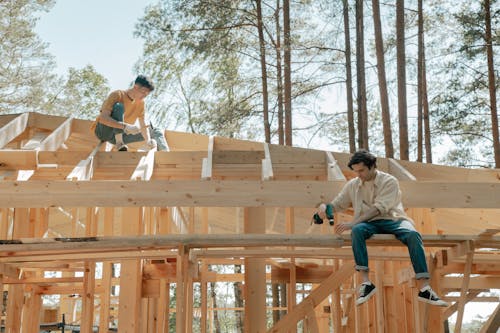
Aerial view of a diverse U.S. suburban neighborhood with modern homes, trees, and roads — captured during daylight.
The U.S. housing market 2025 is shaped by a complex mix of rising interest rates, affordability constraints, shifting demand, and evolving policy efforts. As buyers, sellers, and investors navigate these changes, staying informed is more important than ever.
Mortgage Rates Remain Elevated

Mortgage rates have leveled out in 2025 but remain significantly higher than the sub-4% levels seen earlier in the decade. As of mid-year, the national average for a 30-year fixed-rate mortgage sits between 6.5% and 7%.
Higher borrowing costs have impacted purchasing power, particularly among entry-level buyers. Many are turning to alternative financing options, while some are stepping back from the market entirely, waiting for potential rate drops.
Affordability Crisis Deepens Across the Nation

a young couple reviewing housing prices on a tablet
Affordability continues to be a major issue in many parts of the country. In high-demand cities like Miami, the income required to purchase a median-priced home now exceeds $150,000 annually—far above what most local renters earn.
This growing affordability gap is fueling increased demand for rental housing, multi-family development, and co-living arrangements. It’s also prompting migration to smaller, more affordable metro areas.
Homebuilders Shift Strategy Amid Buyer Hesitation

Construction site of new single-family homes in the U.S.
Homebuilders are facing pressure due to declining interest from first-time buyers. Despite offering incentives such as interest rate buy-downs, many builders are reporting a slowdown in new orders. Some companies are shifting focus to build-to-rent properties or higher-end homes for more affluent buyers.
Inventory levels are climbing in several markets, with unsold new homes reaching their highest levels since the 2009 downturn.
Regional Price Trends Show Mixed Signals

Real estate activity and home prices vary dramatically by region. According to recent projections, home values across the U.S. are expected to rise by less than 1% between February 2025 and February 2026.
While some smaller cities are experiencing steady growth—such as Atlantic City and Knoxville—larger, more expensive markets like Austin and San Francisco are seeing slight price declines. Buyers are gravitating toward regions with more inventory and better value.
Housing Policy: Can New Legislation Fix Supply Shortages?
A major development in 2025 is the emergence of the Congressional YIMBY Caucus, a bipartisan effort to address the national housing shortage. Their proposed solutions include:
-
Loosening zoning restrictions for higher-density development.
-
Offering tax incentives to encourage affordable housing construction.
-
Supporting infrastructure and transit improvements to open up more buildable land.
While still in early stages, these efforts signal a renewed legislative focus on long-term housing supply issues.
Commercial Real Estate Faces Uncertainty
The commercial real estate sector, particularly office space, remains under pressure. With vacancy rates still elevated in major metros, lenders and developers are adjusting their risk strategies.
Bank OZK, one of the largest commercial real estate lenders, is reassessing its portfolio as more than a third of its loans are linked to underperforming properties. This trend is pushing investors toward industrial, mixed-use, and suburban retail spaces.
What’s Next for the U.S. Housing Market?
As the second half of the year approaches, the market outlook will depend on several factors:
-
The Federal Reserve’s stance on interest rates.
-
Progress on housing legislation and zoning reform.
-
Economic indicators such as job growth and inflation.
-
Regional supply and demand imbalances.
Final Thoughts
The U.S. housing market 2025 is defined by uncertainty, but also opportunity. While affordability challenges and high mortgage rates remain obstacles, shifts in policy, regional demand, and builder strategies are opening new paths forward. Whether you’re buying, selling, or investing, staying informed about these changes is key to making confident decisions in today’s market.
Sources & References
-
Homebuilders struggle to sell to first-time buyers – The Wall Street Journal
-
Zillow downgrades 2025 home price forecast – Fast Company
-
Congressional YIMBY Caucus – Wikipedia


